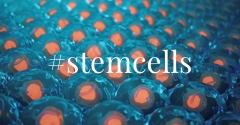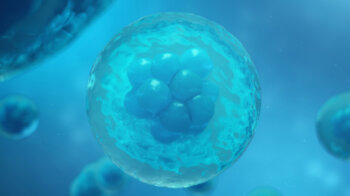NeuroCELLNESS® is a treatment program that combines cell therapy, neuroprotection, and preparatory procedures for the most effective results.
Alzheimer’s disease is one of the most common types of dementia, usually occurring after the age of 65. It begins with forgetfulness and difficulty making decisions, and ends with a complete loss of the ability to care for oneself.
Modern medicine has not yet learned how to restore damaged brain cells and treat Alzheimer’s disease, but the NeuroCELLNESS®i program, developed at the VIRTUS Institute, can slow down the development of the disease and make life easier for the patient and his loved ones.
What is Alzheimer’s disease?
Alzheimer’s disease is a progressive neurodegenerative disease that occurs due to the accumulation of beta-amyloid plaques, neurofibrillary tangles and chronic inflammation in the brain. As a result, neurons die and interneuronal connections are destroyed. These changes lead to memory impairment, thinking, behavioral changes (irritability, attacks of aggression, depression), and ultimately to the loss of the ability to self-care. This is not just age-related changes, but a serious disease that leads to the following consequences:
- destruction of neurons and synaptic connections, disruption of signal transmission in the brain;
- chronic inflammation in the brain;
- atrophy of brain tissue, motor disorders, speech;
- changes in the patient’s personality that lead to his inability to care for himself, making him dependent on the help of loved ones and the environment.
Alzheimer’s disease begins gradually, and it can take several years from the first signs to the diagnosis. To prevent Alzheimer’s disease, it is necessary to adhere to a healthy lifestyle: daily moderate physical activity (walking, swimming, cycling, etc.) combined with proper nutrition and giving up bad habits. Daily memory exercises (reading, solving problems, studying poems, solving crossword puzzles, etc.) are also advisable.
Common causes and symptoms of Alzheimer’s disease
The exact causes of Alzheimer’s disease are currently unknown. There are several theories that combine dementia with genetic characteristics, traumatic and viral brain damage, but none of them has been confirmed. Factors that influence the development of the disease are age, diabetes, depression, low intelligence.
Alzheimer’s disease goes through several stages – from mild dementia to complete destruction of mental functions. In the early stages of the disease, patients complain of:
- memory impairment: difficulty remembering new information, forgetting important events, dates;
- loss of orientation, changes in behavior (loss of interest in favorite activities, frequent mood swings);
- problems with organization and planning;
- difficulties with speech, word selection;
- impaired coordination, gait;
- anxiety, depression, irritability;
- sleep disturbances – it happens that the patient sleeps during the day and is active at night;
- difficulty making decisions;
- difficulty performing everyday tasks (housekeeping, cooking, etc.).
However, all of these signs do not necessarily indicate Alzheimer’s disease. You should see a doctor for a diagnosis. Although there is no specific test for Alzheimer’s disease, a timely examination will reveal the cause of these changes.
Indications for stem cell therapy in Alzheimer’s disease
If you have been diagnosed with Alzheimer’s disease or a loved one, there are not many treatment options. Drug therapy slows down the progression of cognitive impairment, but its effect decreases over time. Cell therapy is currently the most innovative and promising area of research, the research of which is ongoing. The NeuroCELLNESS® program combines cell therapy, neuroprotection and preparatory procedures for the most effective result.
Advantages of cell therapy in Alzheimer’s disease
An important advantage of cell therapy is that it affects not only the symptoms, but also the mechanisms of the disease itself, providing neuroprotection, regeneration and improved blood supply to the brain. In order to create an optimal environment for the cells to work, the patient undergoes preparation with plasmapheresis.
The principle of action of MSC therapy in Alzheimer’s disease
Mesenchymal stem cells (MSCs) help to partially restore damaged neurons, and as a result, restore some lost skills. Cell therapy in Alzheimer’s disease is based on the following principles:
- immunomodulation – MSCs reduce microglia activity and the level of inflammatory cytokines in the brain;
- neuroprotection – cells secrete growth factors (BDNF, NGF) that protect neurons from damage;
- stimulation of neuroplasticity – contribute to the formation of new synaptic connections and the restoration of neuronal networks;
- improvement of blood supply to the brain – stimulation of neoangiogenesis, improved delivery of oxygen and nutrients;
- reduction of beta-amyloid accumulation – MSCs activate the processes of clearance of toxic proteins, reducing the formation of plaques;
- support of neuronal energy metabolism – ensuring optimal conditions for the functioning of brain cells.
Thus, the patient’s condition improves, and the life of his loved ones becomes easier.
Results of cell therapy in Alzheimer’s disease
It is important to understand: neurodegenerative diseases such as dementia and Alzheimer’s disease are currently incurable. However, cell therapy gives the best effect possible today. In particular, VIRTUS patients report the following results:
- improvement of memory, attention, cognitive functions;
- reduction of anxiety, stabilization of emotional state;
- improvement of speech and communication;
- improvement of motor skills, coordination;
- reduction of disease progression, improvement of quality of life.
Thanks to this, patients become more independent in everyday life and in caring for their needs.
Individual comprehensive approach to the treatment of Alzheimer’s disease at VIRTUS
Individual comprehensive approach to the treatment of Alzheimer’s disease at VIRTUS involves not just reducing symptoms, but a systemic effect on the mechanisms of the disease. Before the introduction of MSCs, the patient undergoes a plasmapheresis procedure, which purifies the blood and creates a foundation for the work of stem cells. MSC therapy itself provides neuroprotection, regeneration and improvement of blood supply to the brain.





















